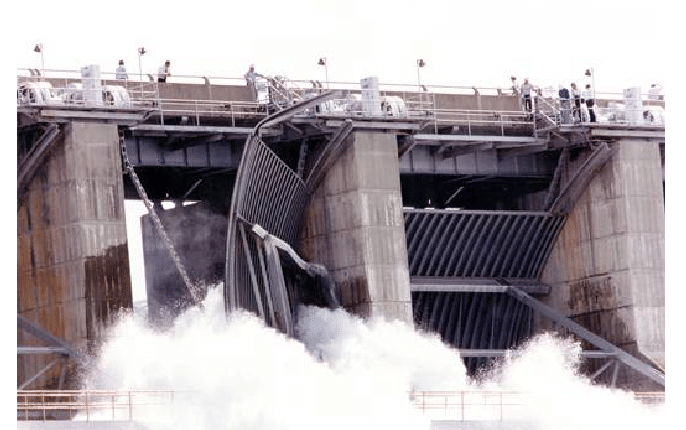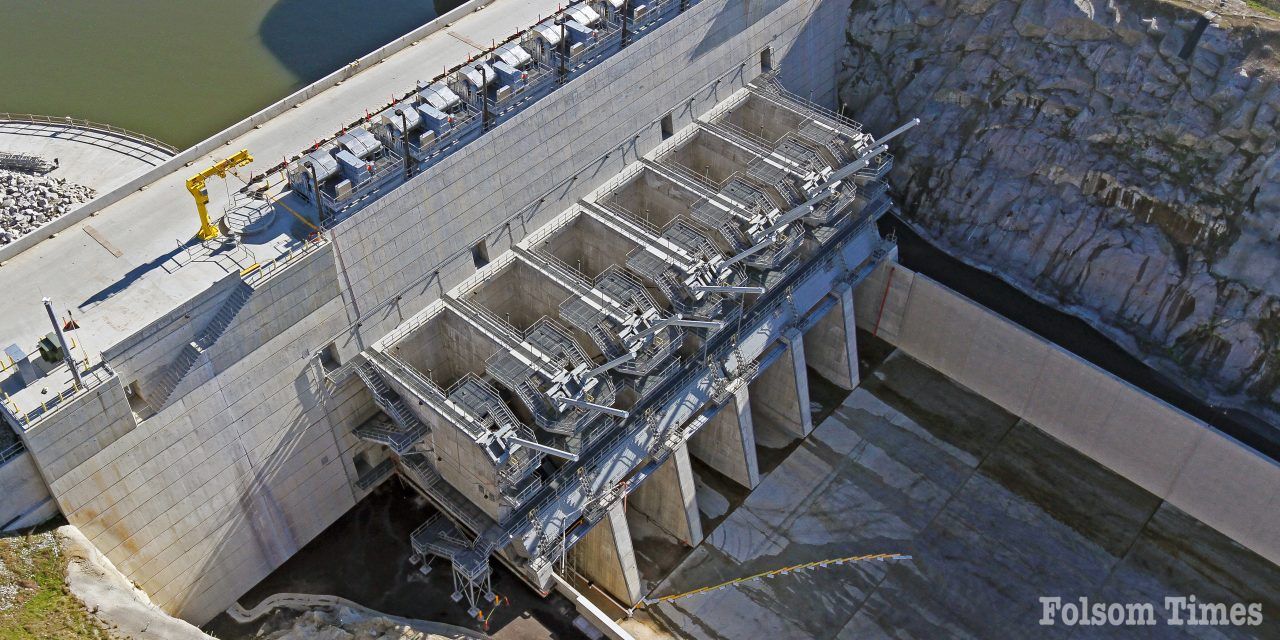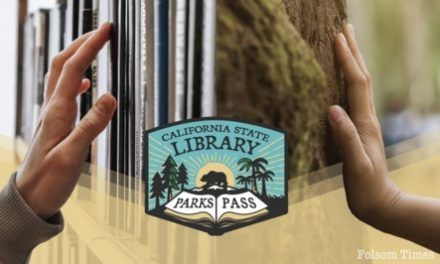A flaw has been discovered in the construction of the new auxiliary spillway at Folsom Dam that is going to cost $16 million and a good deal of time to repair.
“The auxiliary spillway and its gates are fully functional and safe and will continue to be so for several years. The Auxiliary Dam operated for flood releases as recently as January 2023 with no issue or damage, “said Tyler Stalker, Deputy Chief of Public Affairs for the U.S. Army Corps of Engineers as he explained the premature deterioration in a series of media statements, along with he plan to remedy it.
Completed in 2017, the Folsom Dam Auxiliary Spillway project was a near $900-million cooperative effort between the U.S. Army Corps of Engineers and the U.S. Department of the Interior, Bureau of Reclamation.
The new spillway was constructed to release water safely from Folsom Lake during high water levels to protect communities during a flood. The project included a 1,100-foot-long approach channel that funnels water from the lake into the spillway by means of a control structure with six submerged gates to a 3,027-foot-long spillway chute that sends the water the American River through a stilling basin that slows the releases normal flow levels that the river channel will be able to withstand.
According to a review by the USACE and the US Bureau of Reclamation (USBR), it is a flaw in the coating of the components, described as rods, within those aforementioned six gates that have quickly deteriorated, sparking the need for the needed repairs.
When put into action, the auxiliary spillway gates release water by means of hydraulic cylinders that are activated by a streel rod that moves accordingly, as the gate opens and closes. Failure of the hard coating on those rods is reportedly the cause of the deterioration. Officials are confident the condition will not affect operation of the spillway and is not a cause for safety concerns or any leaks in the facility.
According to Stalker, the tests concluded that there are micro-cracks in the rods caused by rapid deterioration of their exterior coating. If they are not repaired, they will continue to deteriorate and cause the life of the gate to be far less than its life span that should be at least 50 years.
The USAC has awarded a contract in the amount of $16.6 million to fabricate new hydraulic rods and cylinders that will utilize a different type of coating to better protect the components. The remedy won’t come quickly, however. Installation is estimated to begin in 2025, with completion estimated in 2027.
After being proposed as early as the 1930’s, the construction of Folsom Dam was completed in 1955 in response to chronic flooding in low-lying Sacramento. Construction of the dam began in 1951 with preliminary excavations for the Folsom Power Plant.
Just as it was being finished, the dam proved it was effective when it came to flood control during the record storms of December 1955, which filled Folsom Lake in a matter of weeks. The dam was officially dedicated on May 5, 1956, and operation was transferred to the Bureau of Reclamation.

Many will remember the morning of July 17, 1995 when the facility made headlines across the state after the original spillway’s third gate failed during operation, resulting in uncontrolled release of nearly 40% of Folsom Lake and a flood of 40,000 cubic feet per second.
After the USBR cited that the previous failure to a design flaw combined with changing conditions over time. The failure made a significant impact on the dam industry with renewed focus on maintenance and monitoring of radial gates to prevent such catastrophic failures.
Keep up with Folsom Times by following us on Facebook by clicking HERE.

Keep up with Folsom Times by following us on Facebook by clicking HERE.




